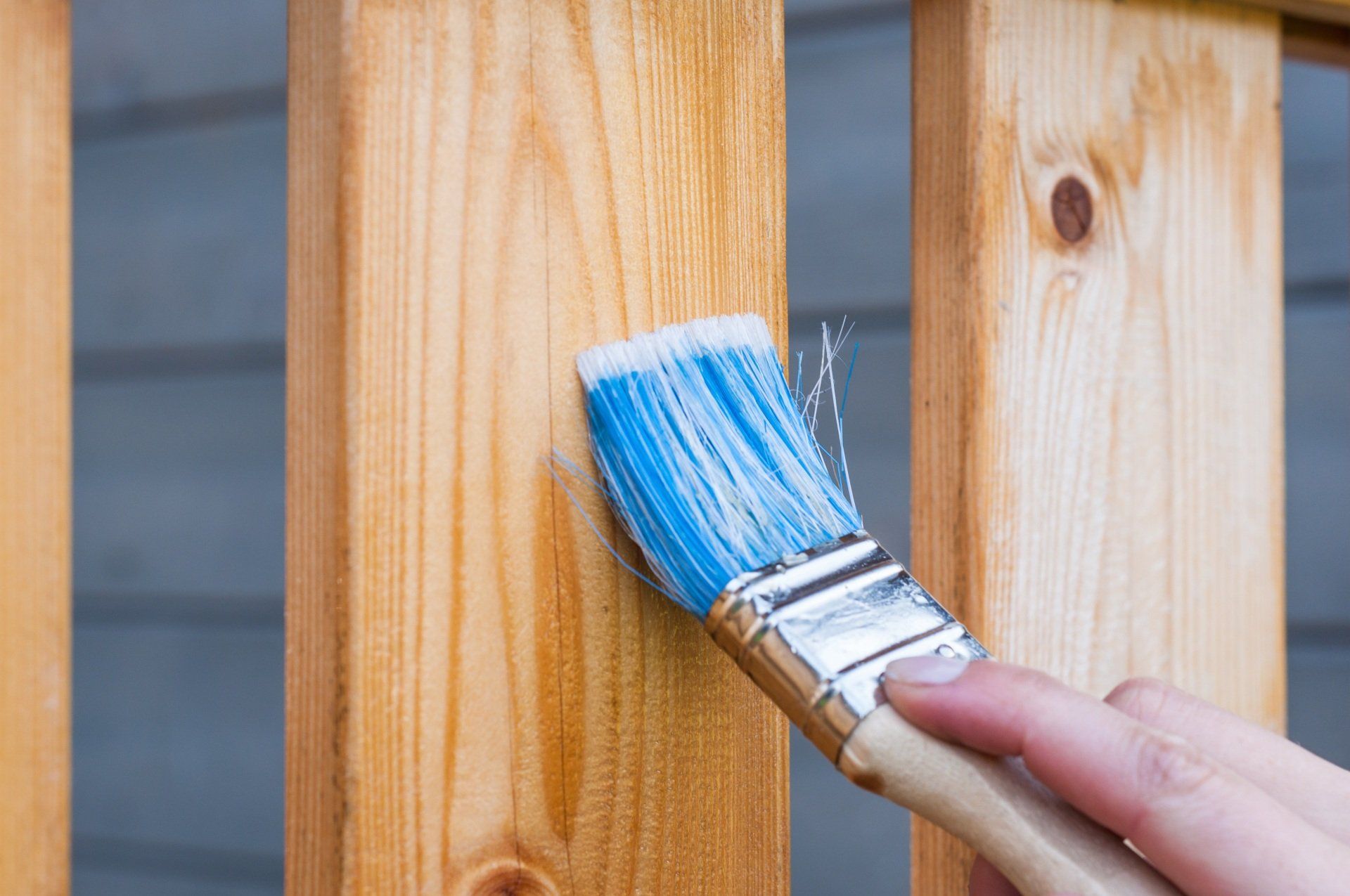Tips For Painting Your Deck Or Fence
Maintaining the appearance and integrity of your deck or fence is essential for enhancing the curb appeal of your home and ensuring its longevity. Whether you're looking to refresh the look of your outdoor space or protect it from the elements, painting or staining your deck or fence can make a significant difference. In this blog post, we'll share valuable tips to help you achieve professional-looking results and prolong the life of your deck or fence.
Preparation
Before diving into painting or staining your deck or fence, proper preparation is key to ensuring a successful and long-lasting finish. Here's an expanded look at the preparation process, including when to avoid using a pressure washer and situations where sanding may not be necessary:
- Cleaning the Surface:
- Using a Pressure Washer: While pressure washers can be effective for removing dirt, grime, and loose paint from exterior surfaces, there are instances where they may not be suitable. Avoid using a pressure washer on soft or delicate wood surfaces, as the high-pressure water jet can cause damage, such as splintering or gouging. Additionally, pressure washers should be used with caution on older or weathered wood, as excessive force can further degrade the surface.
- Alternative Cleaning Methods: In situations where a pressure washer may not be appropriate, consider using a gentle detergent solution and a scrub brush or sponge to clean the surface by hand. This method allows for more control and reduces the risk of damage to the wood.
- Sanding:
- When Not to Sand: In some cases, sanding may not be necessary, especially if the surface is in good condition and the existing paint or stain is sound. If the surface is smooth and free of rough areas or flaking paint, you may be able to skip sanding altogether and proceed directly to cleaning and priming.
- Sanding Over Previously Painted Surfaces: When painting over existing paint, sanding is typically recommended to promote adhesion and smooth out any rough or uneven areas. However, if the existing paint is in good condition and adhering well to the surface, light sanding with fine-grit sandpaper may be sufficient to scuff the surface and provide better paint adhesion.
- Sanding Over Bare Wood: When working with bare wood surfaces, sanding is essential to smooth out imperfections, open up the wood pores, and promote better paint penetration and adhesion. Start with a coarse-grit sandpaper to remove any rough spots or raised grain, then follow up with progressively finer grits to achieve a smooth, even surface.
- Repairing Cracks or Holes:
- Before painting or staining your deck or fence, it's important to inspect the surface for any cracks, holes, or other damage that may need to be addressed. Use a wood filler or epoxy putty to fill in any cracks or holes, and sand the repaired areas smooth once the filler has dried. This will help ensure a uniform and professional-looking finish and prevent water infiltration that can lead to further damage.
- Masking Off Surrounding Areas:
- Before applying paint or stain to your deck or fence, take the time to mask off surrounding areas to protect them from overspray or drips. Use painter's tape to cover any nearby surfaces, such as siding, trim, or landscaping features, that you want to keep clean and free of paint. Additionally, consider using drop cloths or plastic sheeting to protect the ground and any plants or furniture in the vicinity of your painting or staining area.
By carefully considering the condition of your deck or fence and tailoring your preparation methods accordingly, you can ensure a successful painting or staining project and achieve professional-quality results that stand the test of time. Remember to always prioritize proper surface preparation to maximize the longevity and durability of your finished paint or stain job.

Choosing The Right Materials
Selecting the appropriate paint or stain for your deck or fence is crucial for achieving long-lasting results. Consider factors such as durability, color, and transparency when making your selection. For decks, opaque or semi-transparent stains are popular choices, as they offer protection against UV rays and moisture while allowing the natural beauty of the wood to show through. For fences, solid color stains or exterior acrylic latex paints provide excellent coverage and durability.
Once you've chosen the right paint or stain for your project, gather the necessary tools and materials before starting. Essential tools include brushes, rollers, and sprayers for applying paint or stain, as well as sandpaper for surface preparation. Additionally, stock up on drop cloths, painter's tape, and other protective gear to safeguard surrounding areas and yourself during the painting process. By ensuring you have the right paint or stain and all the necessary tools and materials on hand, you can streamline the painting or staining process and achieve professional-quality results.

Maintenance, Care, and Safety Considerations
Once your deck or fence is painted or stained, regular maintenance is essential for preserving its appearance and protecting it from the elements. Keep an eye out for signs of damage, such as peeling paint or rotting wood, and address them promptly to prevent further deterioration. Regularly clean the surface to remove dirt and debris, and consider applying a fresh coat of paint or stain every few years to maintain its beauty and durability. Additionally, consider these specific maintenance tips for decks and fences:
- Decks:
- Regular Inspection: Check for signs of rot, mold, or insect damage, especially in areas prone to moisture buildup such as near planters or under furniture.
- Cleaning: Sweep away debris regularly and use a mild detergent solution and a brush or pressure washer to clean the surface annually.
- Reapplication: Plan to reapply a protective sealant or topcoat every 1-3 years, depending on the level of foot traffic and exposure to the elements.
- Fences:
- Regular Inspection: Inspect the fence for loose or damaged boards, nails, or hardware, and repair or replace them as needed.
- Cleaning: Use a gentle cleaner and a soft brush or sponge to remove dirt, mold, and mildew, and rinse thoroughly with water.
- Reapplication: Consider applying a fresh coat of paint or stain every 3-5 years to maintain its appearance and protection against the elements.
While maintaining your deck or fence, it's essential to prioritize safety to prevent accidents and injuries. Wear appropriate personal protective equipment, such as gloves and goggles, to protect yourself from potential hazards. Ensure proper ventilation when working with paint or stain, and follow manufacturer instructions for handling and disposing of these products safely. By incorporating regular maintenance and safety practices into your routine, you can prolong the life of your deck or fence and enjoy a beautiful outdoor space for years to come.
If you're unsure about tackling the project yourself or simply prefer to leave it to the experts, consider hiring experienced painters or contractors for your deck or fence painting or staining needs. Professionals have the expertise, tools, and materials to ensure high-quality results and can save you time and effort in the process. Additionally, working with professionals can provide peace of mind knowing that your project will be completed efficiently and to your satisfaction. Whether you choose to tackle the project yourself or enlist the help of professionals, your deck or fence will thank you for the care and attention you give it. By following these tips and techniques, you can achieve professional-looking results and enjoy a beautiful, well-protected outdoor space for years to come.
You might also like



Quick & Reliable
We are available phone or email, so reach out today!
Location
Call
By RenovateROI - Digital Marketing For Remodeling Contractors

